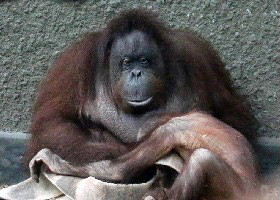Sumatran Orangutan Pongo abelii
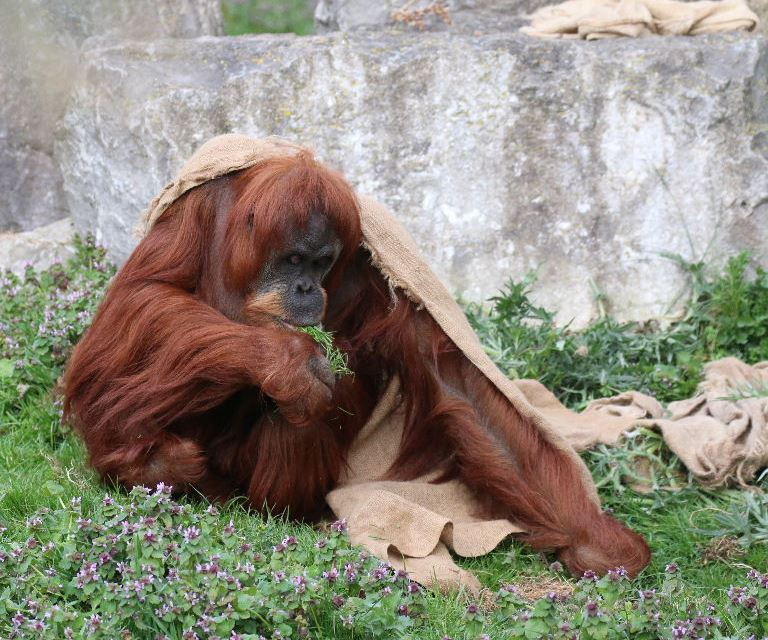
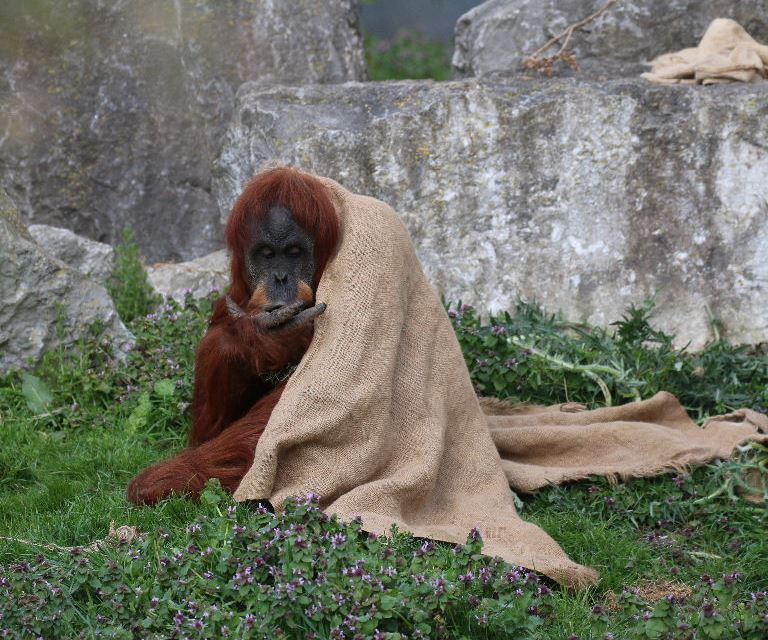
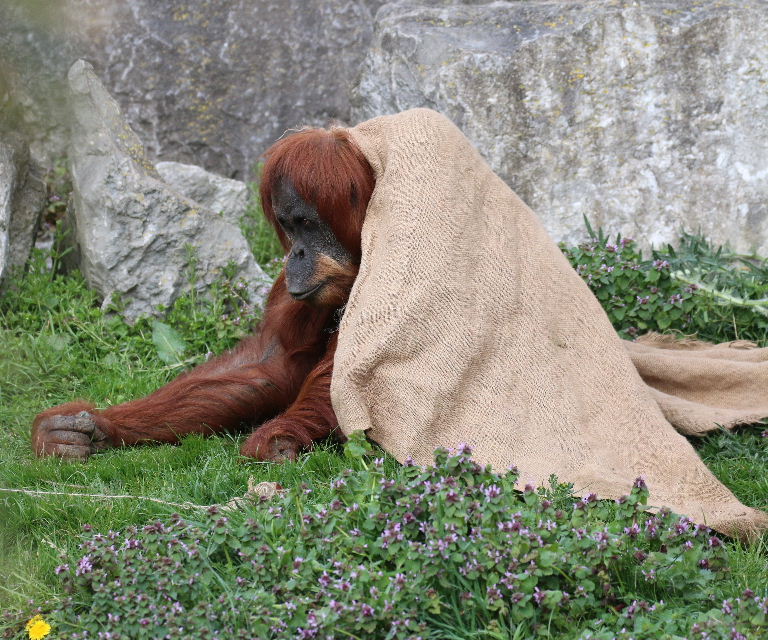
Split into a new species only in 1996, the Sumatran Orangutan,
P. abelii, is native to northern Sumatra. A third species, the Tapanuli Orangutan,
P. tapanuliensis, from a small region of Sumatra, was described only in 2017.
Both Sumatran and Tapanuli have more golden orange hair than the Bornean, rounder/flatter male face flanges and spend more time in trees (out of reach of tigers).
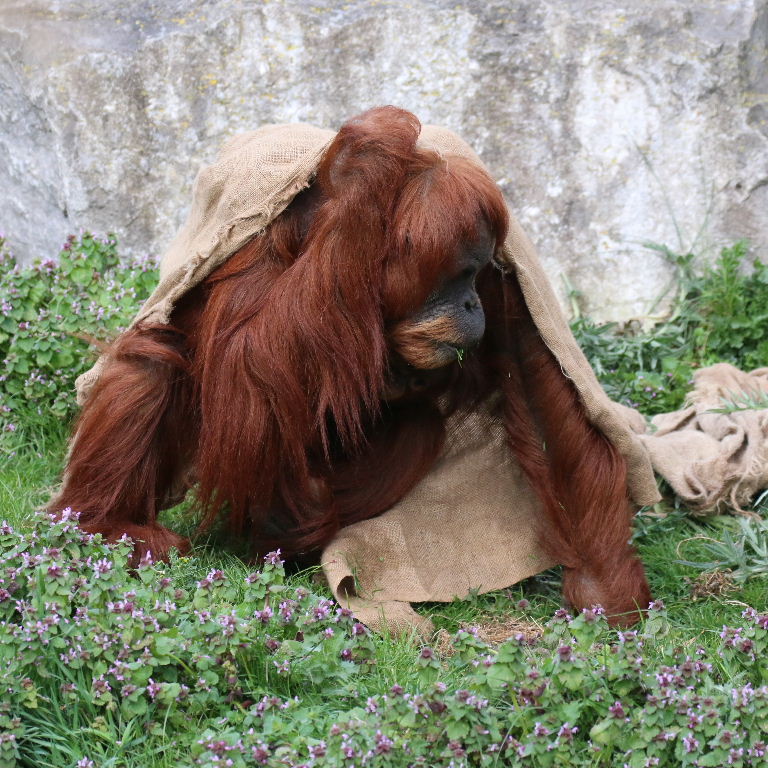
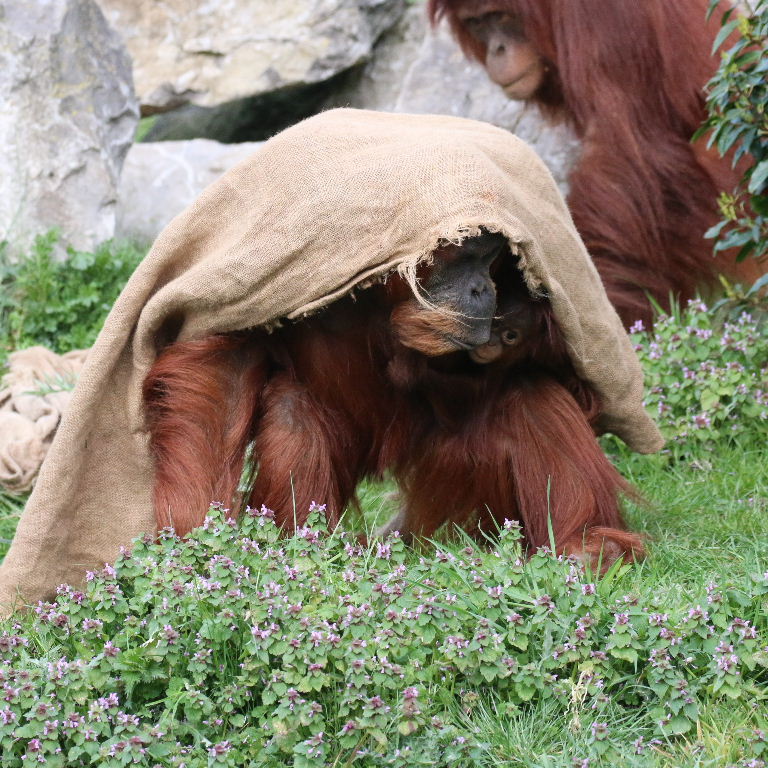
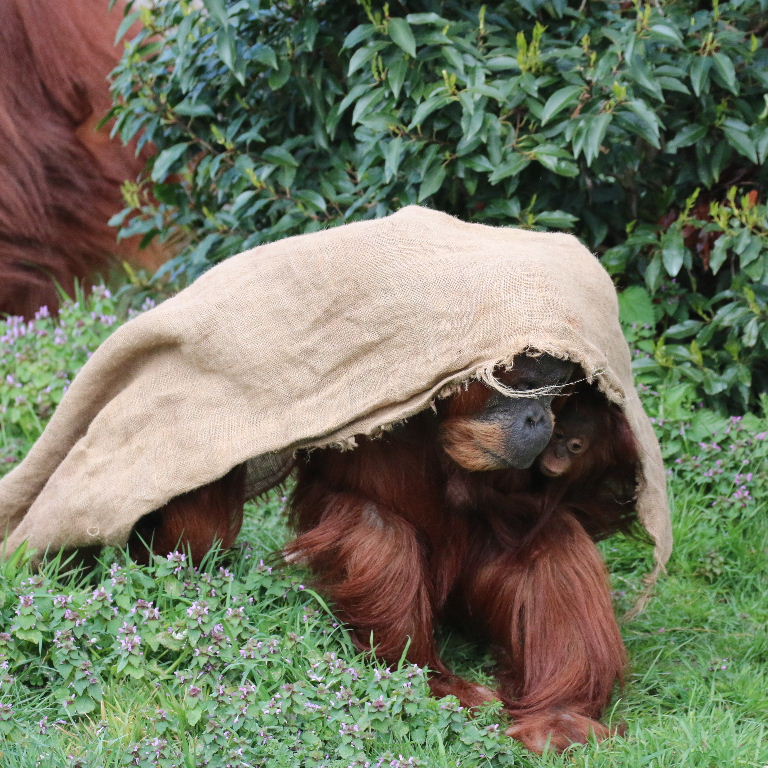
The sack is not so much a fashion statement but rather a means of protecting her young baby on her shoulder.
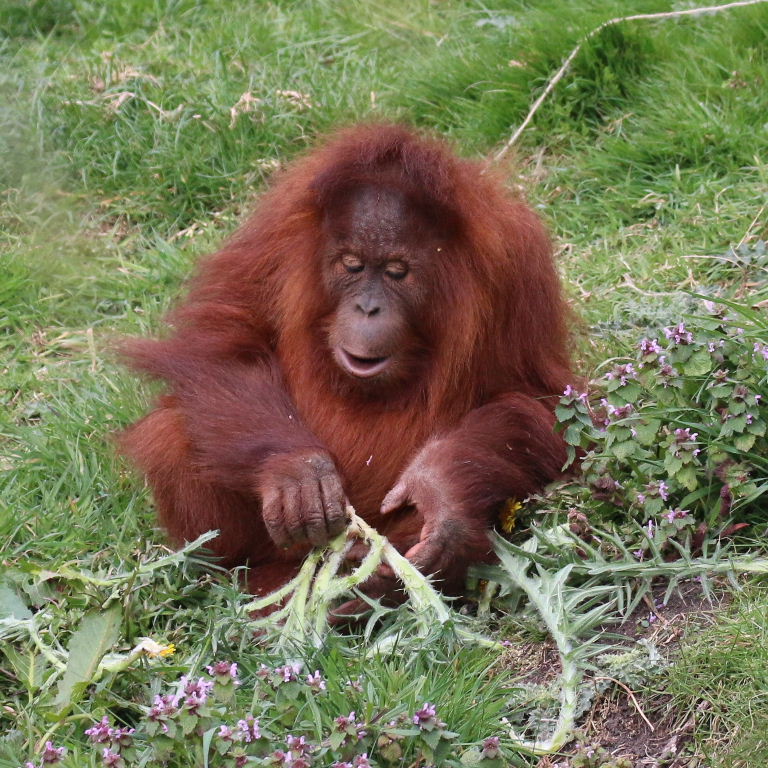
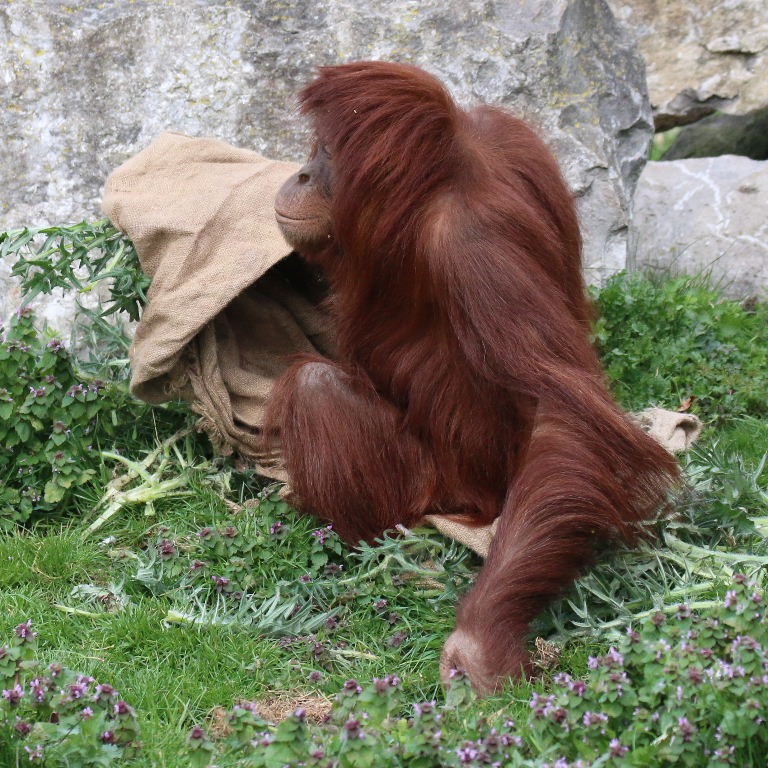
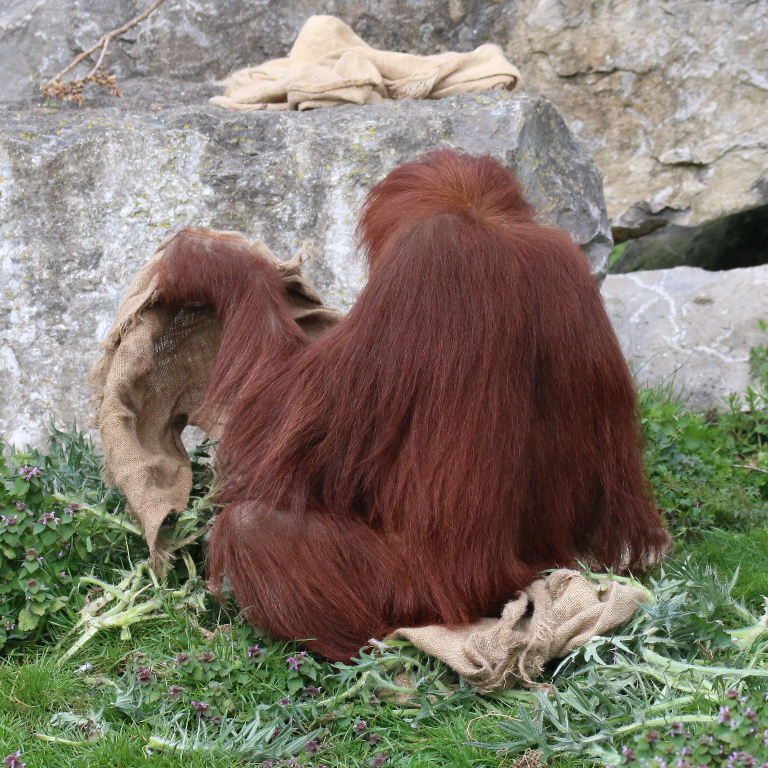
It is also a useful cushion when sitting in damp, stony or thistled ground and, showing intelligence, protection from thorns
when handling thistles. In the wild, Sumatran females would almost never spend time on the ground but would stay in the rainforest canopy.
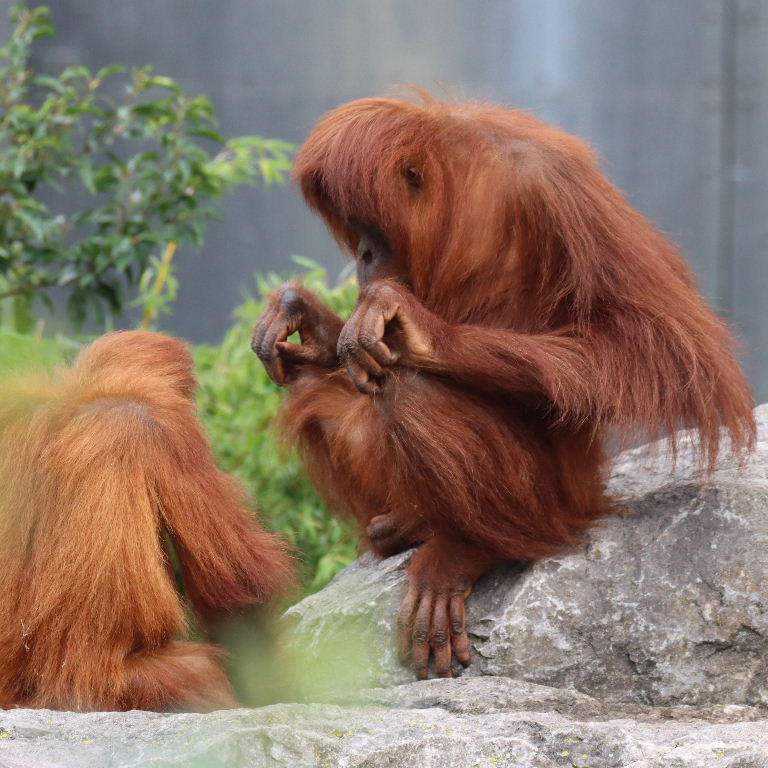
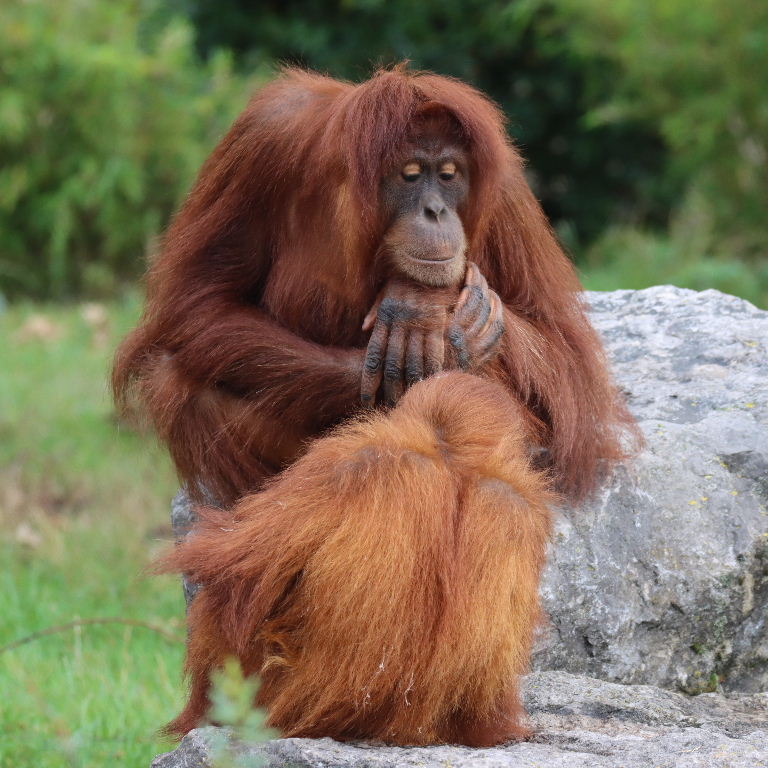
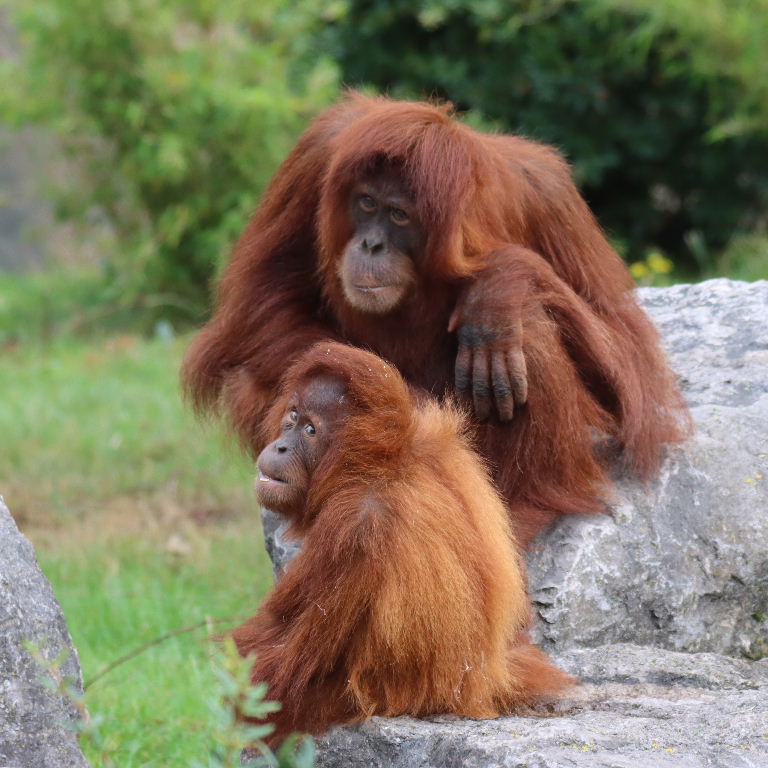
Teaching the young. The Sumatran Orangutan is now in the wild only in a small part of northern Sumatra
and remains critically endangered. Main threats include continued forest burning for mining and palm oil plantations (for
food, cosmetics and bio-diesel) and continued capture for the pet and bush meat trades (for the former the mother is killed
and the baby, if it survives the trauma, is sold).



